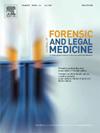Common errors In medico-legal reporting by the first responders at A tertiary trauma unit In North India
IF 1.2
4区 医学
Q3 MEDICINE, LEGAL
引用次数: 0
Abstract
Background
The Trauma unit deals with wide variety of medico-legal cases such as assaults, road traffic accidents, injuries due of self-harm, sexual violence, etc. The primary duty of first responders (attending physician/registered medical practitioner) is saving lives, besides recording the medico-legal report (MLR).
Objectives
To identify the frequently-encountered errors in medico-legal reporting by emergency physicians and also to signify the importance of efficient documentation of MLRs.
Methodology
Data acquisition done retrospectively from previous records after excluding the referral cases associated with outside hospital Medico-legal cases. A total of 400 MLRs were analyzed and score allotted based on the presence or absence of adequate documentation in MLRs. The minimum score is 1, while the maximum score is 5. Grading is done based on the cumulative score for each entity as Above average, average and below average.
Results
The treating emergency physicians documented injury in 343 out of 400 MLRs. A total of 309 were graded as "Above average" and injury-related description was deficient in 14.2 % (n = 57) cases. Size or dimensions of injury was not mentioned in 80.17 % (n = 186), age and colour of injury was described in none.
Discussion
Various factors lead of certain common errors while preparing such medico-legal reports. These errors lead to unnecessary courtroom visits and questioning of the medical fraternity during legal proceedings. Lack of standardization of uniform guidelines while writing an MLR across the nation leads to significant number of errors while documenting MLRs. We implemented a mandatory induction for all the first responders of each batch once in six weeks and observed mitigation of errors in documentation.
Conclusion
It is highly recommended to conduct fortnight training or induction of the first responders in preparing the MLRs and effectively enlighten doctors on the importance of medico-legal documentation. This would avoid unnecessary courtroom visits and questioning of the medical fraternity during legal proceedings.
在印度北部的三级创伤单位的第一响应者在医疗法律报告中的常见错误
背景:创伤科处理各种各样的医疗法律案件,如袭击、道路交通事故、自残造成的伤害、性暴力等。第一反应者(主治医生/注册医生)的主要职责是拯救生命,除了记录医疗法律报告(MLR)。目的探讨急诊医师在法医学报告中经常遇到的错误,并指出有效记录mlr的重要性。方法:在排除与院外法医学病例相关的转诊病例后,从既往记录中回顾性获取数据。共分析了400个MLRs,并根据MLRs中是否存在足够的文件来评分。最低分为1分,最高分为5分。评分是基于每个实体的累积分数,分为平均以上、平均和平均以下。结果400例MLRs中,急诊医师记录有343例损伤。共有309例被评为“中等以上”,14.2% (n = 57)的病例损伤相关描述不足。80.17% (n = 186)未提及损伤的大小或尺寸,未描述损伤的年龄和颜色。在编写此类医学-法律报告时,各种因素导致某些常见错误。这些错误导致在法律诉讼过程中不必要的法庭访问和医学界的质疑。在全国范围内编写MLR时缺乏标准化的统一指导方针,导致在记录MLR时出现大量错误。我们每六周对每个批次的所有第一响应者实施一次强制入职,并观察到文件错误的减少。结论建议对急救人员进行为期两周的培训或上岗,有效地提高医生对法医学文献的认识。这将避免在法律诉讼过程中不必要的法庭访问和医学界的质疑。
本文章由计算机程序翻译,如有差异,请以英文原文为准。
求助全文
约1分钟内获得全文
求助全文
来源期刊

Journal of forensic and legal medicine
MEDICINE, LEGAL-
CiteScore
2.70
自引率
6.70%
发文量
106
审稿时长
57 days
期刊介绍:
The Journal of Forensic and Legal Medicine publishes topical articles on aspects of forensic and legal medicine. Specifically the Journal supports research that explores the medical principles of care and forensic assessment of individuals, whether adult or child, in contact with the judicial system. It is a fully peer-review hybrid journal with a broad international perspective.
The Journal accepts submissions of original research, review articles, and pertinent case studies, editorials, and commentaries in relevant areas of Forensic and Legal Medicine, Context of Practice, and Education and Training.
The Journal adheres to strict publication ethical guidelines, and actively supports a culture of inclusive and representative publication.
 求助内容:
求助内容: 应助结果提醒方式:
应助结果提醒方式:


